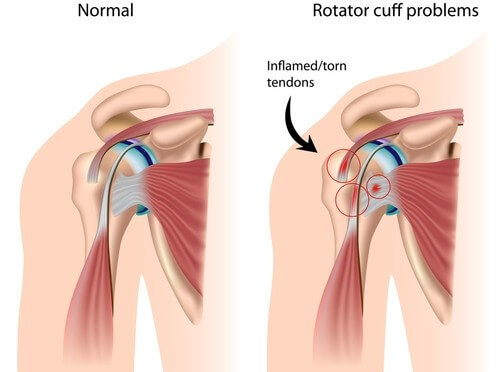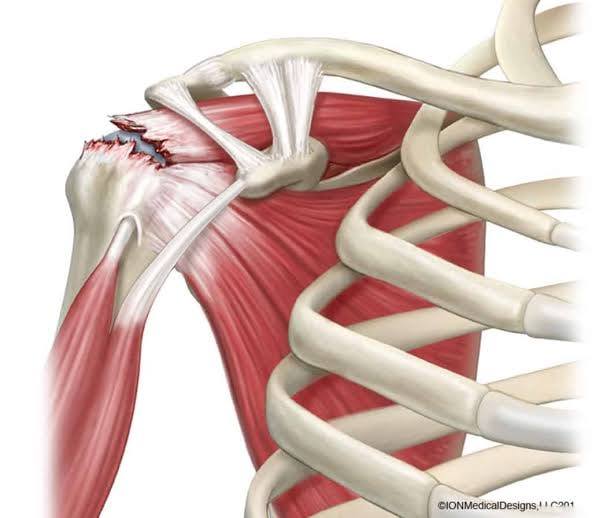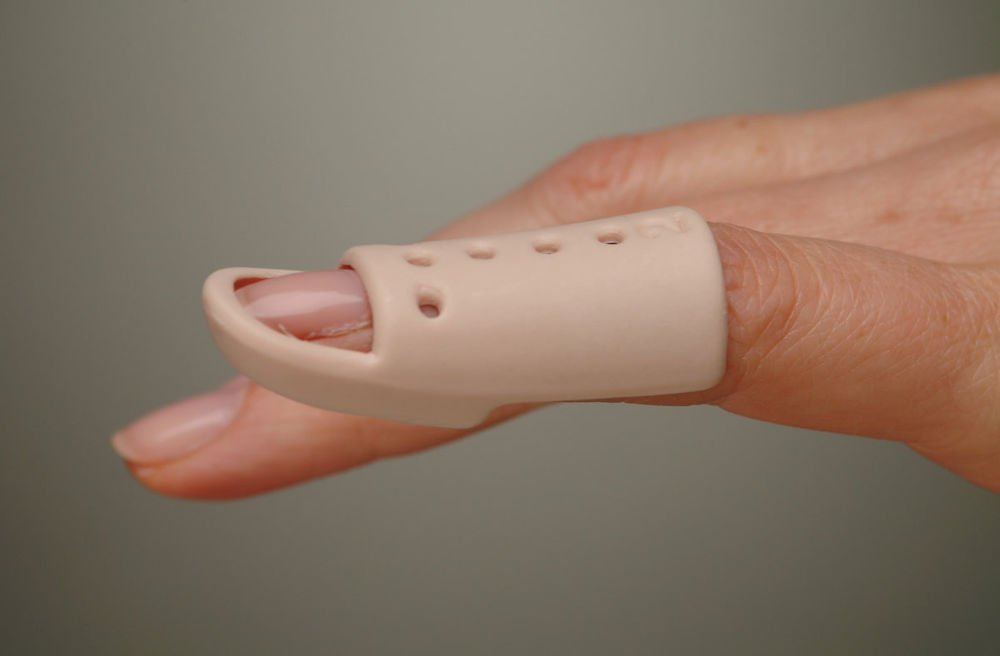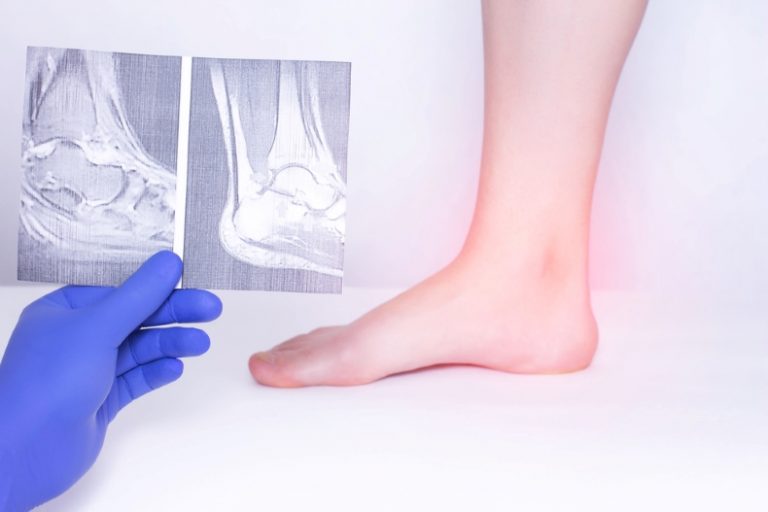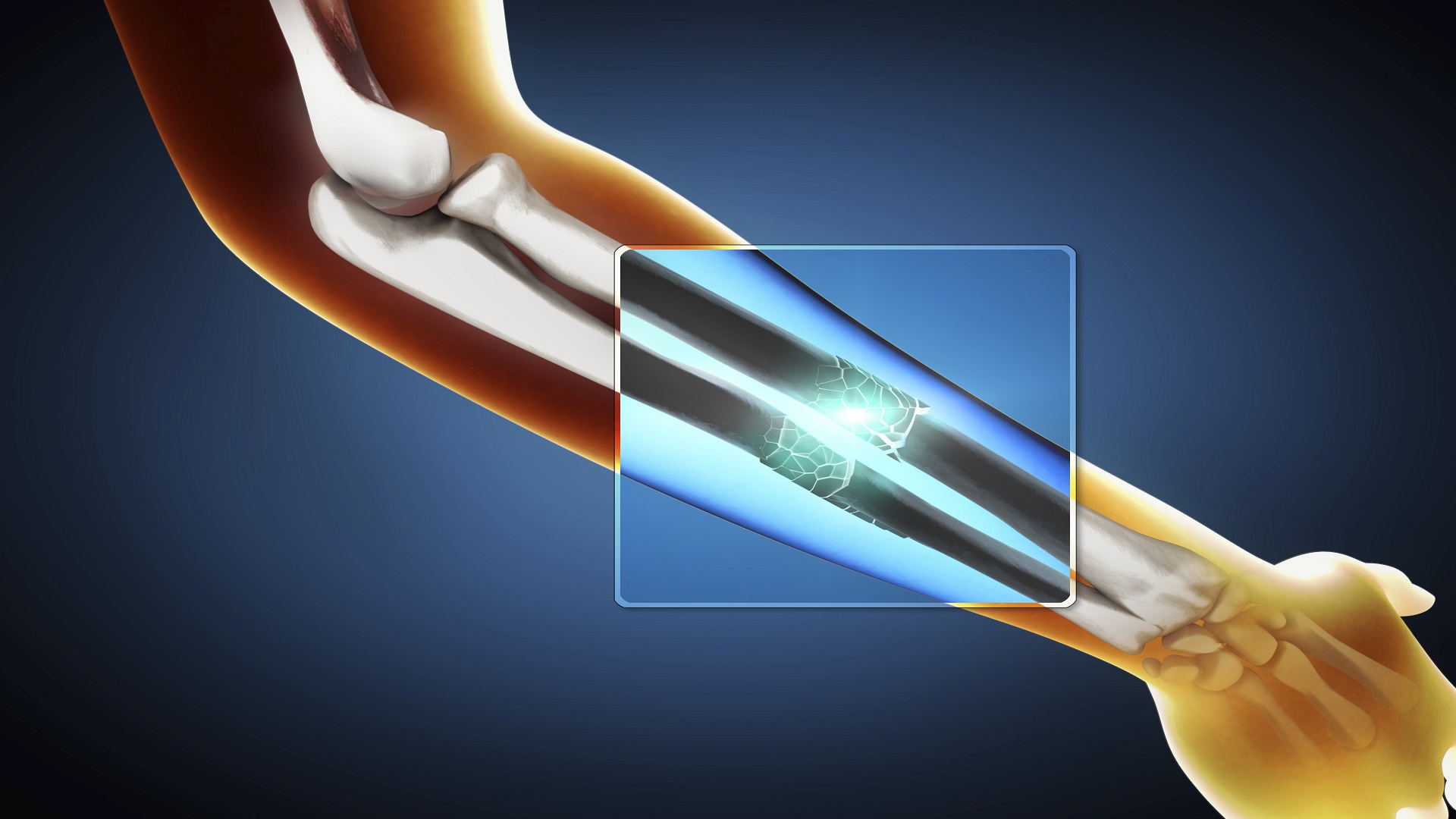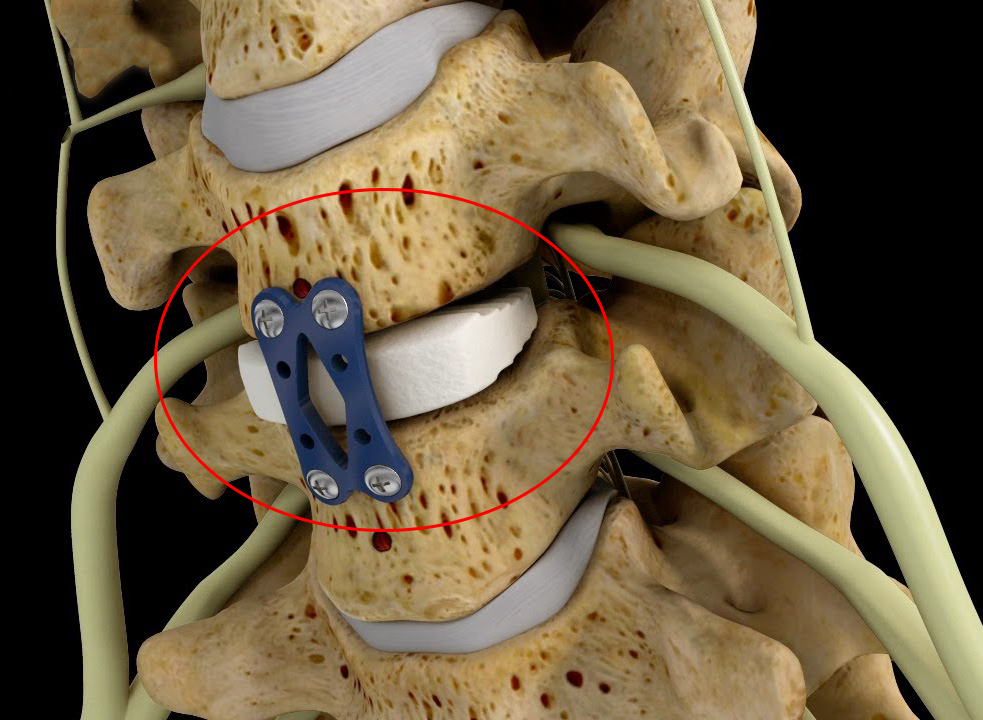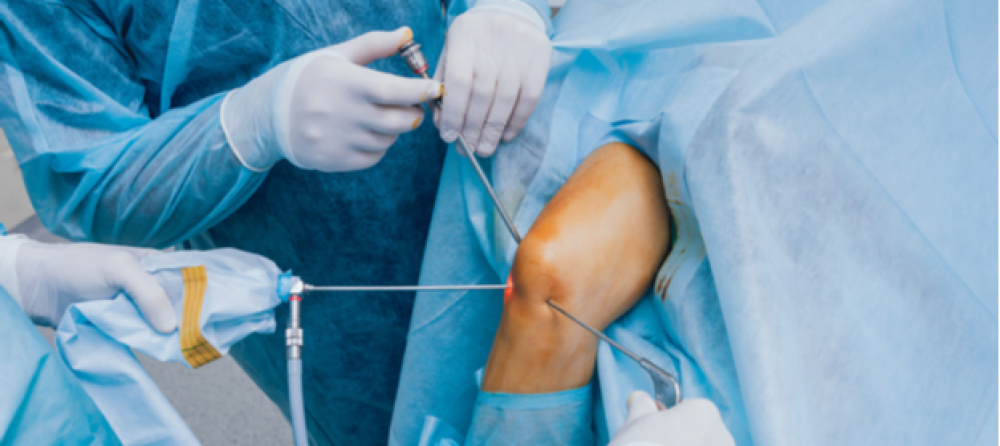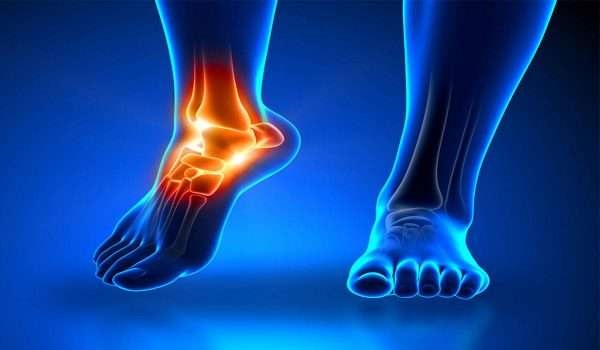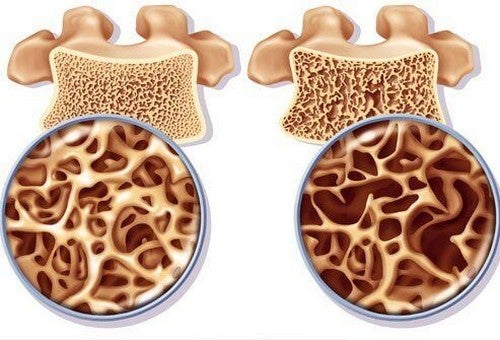Learn About the Symptoms of a Torn Shoulder and What is the Appropriate Treatment?
Symptoms of a Shoulder Tear
A shoulder tear can be a common injury, especially among athletes and the elderly. A tear in the shoulder tendons and ligaments can be painful and affect the ability to carry out daily activities. In this article, we will highlight the symptoms of a shoulder tear and how to recognize them.
Sharp and Increasing Pain: One of the primary symptoms of a shoulder tear is a sharp and increasing pain in the affected joint. The pain may start mildly and then increase gradually with the use of the injured shoulder. The pain can become severe when attempting to move the shoulder or when sleeping on the affected side.
Weakness and Limited Movement: A shoulder tear may lead to weakness and limited movement in the affected joint. You may find it difficult to lift heavy objects or to move your shoulder easily. This is due to the tear’s impact on the joint’s stability and the proper contraction and relaxation of the muscles.
Difficulty in Performing Daily Activities: Daily activities that rely on the use of the shoulder, such as dressing or combing hair, become difficult and painful for those suffering from a shoulder tear. The pain can restrict arm movement and make it incapable of performing these activities normally.
Swelling and Bruising: A shoulder tear may be accompanied by swelling and bruising around the affected joint. When a tear occurs in the tendons or ligaments, fluid accumulates in the shoulder causing swelling. Large bruises may also appear in the area of the injured shoulder.
Clicking Sound: Some individuals may notice a clicking sound when moving the injured shoulder. This sound may indicate a tear in the tendons or ligaments affecting the joint’s movement.
If any of these symptoms are present, it is important to consult a doctor for the diagnosis of the tear and to start appropriate treatment. This may require a comprehensive shoulder examination and radiographic images to confirm the presence of a tear. The treatment for a shoulder tear depends on the size of the tear and its severity. In cases of minor tears, it can be treated using ice and physical therapy to strengthen the muscles and improve joint movement. However, in cases of severe tears, surgery may be needed to repair the damaged tendons or ligaments.
The recovery time from a shoulder tear varies from person to person and depends on the severity of the injury and the type of treatment followed. Recovery may take from a few weeks to several months. After surgery, the patient may require a hospital stay for a few days and undergo physical therapy sessions to promote the restoration of movement and strength in the shoulder.
A shoulder tear is a common condition that can affect the tendons and ligaments in the joint. Symptoms can include sharp and increasing pain, weakness and limited movement, difficulty in performing daily activities, swelling and bruising, and a clicking sound. Treatment for a tear depends on its size and severity and includes ice and physical therapy in mild cases, and may require surgery in severe cases.
What is the Treatment for a Shoulder Muscle Tear?
Many people suffer from shoulder muscle tears, an injury that can occur as a result of intensive sports activities or incorrect movements. Patients with this injury may experience sharp pain in the shoulder, and may feel weakness in the muscles and difficulty in moving the shoulder properly.
Here are several methods for treating shoulder muscle tears, and below we will review the most prominent of these methods:
Physical Therapy: Physical therapy is one of the most important ways to treat shoulder muscle tears. This type of treatment involves performing specific exercises to strengthen the shoulder muscles and restore their movement. Physical therapy may help reduce pain and promote gradual improvement in the condition of the tear.
Massage: Massage is an effective means to relieve pain and improve blood flow to the affected muscles. Various massage techniques can help relieve tension and discomfort in the shoulder area and improve the range of motion.
Rehabilitative Exercises: Rehabilitative exercises are an important method to help restore muscle strength and flexibility after a shoulder muscle tear injury. These exercises should be practiced under the guidance of a physical therapy specialist to ensure proper execution and to gain maximum benefit.
Ice and Heat Use: Using ice and heat is an effective method in alleviating pain, swelling, and accelerating the healing process. It is advisable to place an ice pack on the affected shoulder area for 20-30 minutes several times a day. After a few days and reducing inflammation, a heat pack can be used to improve blood flow to the injured area.
Medications: The doctor may recommend taking non-steroidal anti-inflammatory pain relievers to ease the pain associated with a shoulder muscle tear. It is important to consult the doctor before taking any medication to determine the appropriate dosage and the suitable period for its use.
Surgery: Surgery is a final option in cases of severe and chronic shoulder muscle tears that cannot be treated with traditional methods. The surgeon repairs the tear and reconstructs the tissue; in most cases, ligament repair requires a rehabilitation period to restore strength and normal movement to the shoulder.
Shoulder muscle tears must be diagnosed and treated by a specialist doctor. Appropriate medical intervention should be provided in a timely manner to ensure proper recovery and full restoration of shoulder function.
How to Relieve Shoulder Tear Pain?
The pain from shoulder tendon tears is painful and annoying and may affect your daily life and ability to perform various activities. Here are some tips that can help you alleviate shoulder tear pain and promote the healing process.
- Avoid painful movements: Avoid collisions with movements that cause you more pain, such as lifting your arm to the side or rotating it outward. Try to identify certain movements that may increase your pain and avoid them as much as possible.
- Rest and relaxation: It is advisable to give your shoulder sufficient rest to improve and heal. Relax the stressed shoulder muscles by placing them in a comfortable position and using pillows or pads to reduce pressure.
- Using ice: Apply an ice pack wrapped in a thin cloth to the painful area for 15-20 minutes, several times a day. Ice helps reduce shoulder swelling and relieve pain.
- Gently massage the painful area: Gently massaging the affected area can help improve blood flow and relieve tightened muscles. Use light circular movements with your fingertips to continuously massage the top of your shoulder.
- Rehabilitation exercises: Consult your doctor or physical therapist about the appropriate rehabilitation exercises for you. There are exercises that help strengthen the shoulder muscles and surrounding tendons to reduce pain and promote healing.
- Medicinal assistance: Your doctor may prescribe some pain relief medications to soothe the pain and calm you down. Consult your doctor before taking any medication to ensure your safety and get the right guidance.
- Heating: Local heat such as warm compresses can be used to improve blood flow to the affected area and relieve tension and pain. The heat can help relieve the pain of a shoulder tear.
- Visit a physical therapist: Your doctor may direct you to a physical therapist to help relieve shoulder tear pain and improve the flexibility of muscles and tendons.
Please note that these tips are for relieving shoulder tear pain and promoting the healing process and are not a substitute for consulting a specialist doctor. You should always consult a doctor to determine the accurate diagnosis and receive appropriate treatment.
How do I know if I have a muscle tear?
Muscle tear is a common injury that people may experience in various fields and physical activities. A muscle tear occurs due to sudden stretching or strong strain on the muscle, leading to tearing of its fibers. Unfortunately, a muscle tear can cause acute pain and restrict the movement of the affected muscle.
To accurately diagnose a muscle tear, you must be aware of the main symptoms that can indicate this condition. Here are some common symptoms and indicators of muscle tears:
Pain in the injured muscle: Pain is one of the most prominent symptoms of any muscle injury. Often, the person may experience acute or severe pain in the injured muscle. This pain may increase when engaging in any activity that requires the use of the injured muscle.
Muscle swelling: The injured individual might notice swelling in the muscle that has been torn. This swelling could be localized, meaning it is confined to the injured area.
Difficulty moving the muscle: You may experience difficulty in moving the muscle that has sustained the tear. It may become difficult to lift a heavy object or perform simple activities such as walking or eating.
Appearance of bruises or redness: Some individuals may notice the presence of bruises or redness in the area of the tear. These bruises may be blue or green in color, which depends on the severity of the injury.
Cracking sound: In the case of a strong muscle tear, the injured person may hear a cracking sound at the time of injury. This sound can be a strong indicator of a muscle tear.
With these symptoms present, a person suffering from a muscle tear may lead to their doctor to obtain the appropriate diagnosis and proper treatment. For diagnosis, the doctor typically follows some basic steps:
Physical examination: The doctor conducts a physical examination of the injured area and inquires about the different details of the injury, such as how it occurred, its severity, and symptoms.
Medical history and symptoms: The doctor may ask about the patient’s medical history and any other health-related matters. They may also inquire about the symptoms that appeared after the injury and any other issues with movement or strength.
Diagnostic tests: In some cases, some diagnostic tests may be requested to confirm the diagnosis. These tests can include X-rays, magnetic resonance imaging (MRI), and ultrasound scans.
After identifying muscle tears through appropriate diagnosis, the doctor determines the proper treatment to avoid complications and accelerate the healing process. Treatment may include applying ice to reduce swelling and pain, using pain relievers to ease pain, as well as massage and rehabilitative exercises. In cases of severe injuries, surgical treatment may be necessary.
Ultimately, muscle tears should be diagnosed and treated by a specialist to avoid complications and ensure a quick and healthy recovery for the injured. Therefore, it is advised to visit a doctor if any of the mentioned symptoms appear and if there is any pain or discomfort in the muscle.
How long does it take to treat a shoulder tear?
Tears in the ligaments in the shoulder area are a common problem resulting from the strain of the tendons or a direct injury to the joint. A ligament tear can be painful and significantly affect the movement and function of the shoulder. However, a shoulder tear can be successfully treated through early treatment and appropriate medical measures.
The healing time for a shoulder tear varies depending on the severity of the injury and the type of tear. In the case of minor tears, it may take from a few weeks to several months to fully recover. In cases of severe tears requiring surgery, recovery may take 4 to 6 months or more.
Shoulder tendon tears are usually treated with arthroscopic surgery, which is a minimally invasive surgical procedure using thin tools to repair and reattach the torn tendons. After surgery, the patient is placed in a shoulder sling to support and reduce the pressure on the joint and injured tendons. The patient may need to stay in the hospital for a day or two after the surgery, after which they are directed to undergo physical therapy sessions to enhance the healing of the shoulder and restore its movement and strength.
The surgeon should determine the number of physical therapy sessions required based on the patient’s condition and the complexity of the tear. Typically, at least 3 sessions per week are recommended to achieve the best results. Physical therapy aims to strengthen the damaged tendons, improve shoulder movement, reduce inflammation, and alleviate pain.
Although arthroscopic tendon repair is the common method for treating shoulder tears, it is important to consult your doctor to determine the best treatment approach for your specific case. Other therapeutic options available may include ultrasound therapy sessions, injections of platelet-rich plasma components, or the use of a device called a “Continuous Passive Motion machine” to gently move the shoulder and stimulate tendon healing.
Ultimately, it should be noted that the healing of shoulder tendon tears can take a long time and may require patience. You should carefully follow medical instructions and guidance and get enough rest for the shoulder during the healing period. Severe tear cases may require prolonged and intensive treatment, so it is important to stick to the treatment program and follow up with regular assessments with the doctor to ensure full recovery and return to your routine activity without pain or restrictions in shoulder movement.
Why does the muscle tear?
Muscle injuries are the direct cause of muscle tears, which occur for the following reasons:
- Failure to perform warm-up exercises before starting sports exercises. Warming up is an important part of any sporting activity as it involves light exercises aimed at increasing blood flow and improving muscle perfusion. Ignoring warm-up can increase the risk of muscle tears.
- Second-degree muscle tear: This type of tear occurs when the muscle partially tears or detaches from the tendons. It is accompanied by swelling, pain, and an inability to move the affected area normally.
- Third-degree muscle tear: This occurs when the muscle completely separates from the tendons and tears severely. It is accompanied by severe pain, swelling, bruising, and an inability to move the injured muscle at all.
- Complete tear: This is a total tear in the muscle body, which is rare in the muscle itself but may occur in the muscle tendons, with the Achilles tendon being the most prone to tearing. A complete muscle tear is accompanied by an inability to move the muscle or tendon at all, with a significant gap at the site of the tear, severe pain, swelling, and a change in skin color from red to blue then yellow.
- Sudden muscle contractions are another reason for muscle tears. This occurs due to a mismatch between the homogenous and antagonistic muscle groups or carrying a heavy load that exceeds the muscle’s capacity. The tear may be partial or complete and may occur in any part of the muscle. This sometimes happens during intense sports activities, where sudden stress leads to a tear in some muscle tissues.
- Despite the common belief that a muscle tear occurs when a single muscle fiber tears, in reality, a muscle tear happens to a large group of muscle fibers (a bundle of fibers), resulting in bleeding within these fibers.
Understanding the cause of muscle tears is crucial for prevention. Individuals should take enough time to warm up before any sports activity and avoid overloading the muscles beyond their capacity. Muscles should also not be suddenly strained during exercise. In case any symptoms of a muscle tear occur, it is necessary to consult a specialist to diagnose the condition and take appropriate measures for treatment.
How is a muscle tear treated?
Muscle tears are a common condition that occurs when muscle fibers tear due to excessive stress on the muscle or direct injury. Muscle tears can happen for several reasons, including intense sports activities, accidents, and violent forces affecting the muscles. Therefore, knowing how to treat a muscle tear is important for restoring muscle vitality and speeding up recovery.
In most cases, a muscle tear can be treated at home using simple procedures and appropriate medical guidance. However, more significant tears may require specialized medical care and may involve surgery in some cases.
Let’s look at five important steps to treat a muscle tear:
- Resting the injured muscle: The first step in treating a muscle tear is to give the muscle sufficient rest to recover. The use of the injured muscle should be avoided for some time after the injury. There may be a need to wear splints or supports to ensure the muscle’s stability during the rest and recovery period.
- Applying ice: Applying ice to the area of muscle tear is an important step to reduce inflammation, swelling, and alleviate pain. It is recommended to place an ice pack on the injured area for 15-20 minutes every two hours for 2-3 days after the injury. Using pain relievers: Topical or oral pain relievers may be used to alleviate pain and soothe. It is necessary to consult the treating physician before taking any pain relievers to ensure they are suitable for the individual’s health condition.
- Medical exercises: Medical exercises and physiotherapy directed by a physical therapy specialist offer significant benefits in treating muscle tears. These exercises help to strengthen the surrounding muscles, improve flexibility, stimulate blood flow, and accelerate the healing process.
- Consulting an orthopedic doctor or a physical therapy specialist: Consulting an orthopedic doctor or a physical therapy specialist may be necessary for larger tears or persistent tears. The medical professional can provide an innovative treatment plan that includes rehabilitation sessions, appropriate medication prescription, and guidance on nutrition and self-care for quick recovery.
The patient must follow the doctor’s instructions and take good care of rest and self-care. The use of pain-relieving ointments, gentle massage, and local heating may help speed up the recovery process and reduce the duration of pain. If pain, swelling, or a sense of weakness persists, the patient should visit a specialist for a more accurate assessment of their condition and to determine the appropriate treatment plans.
